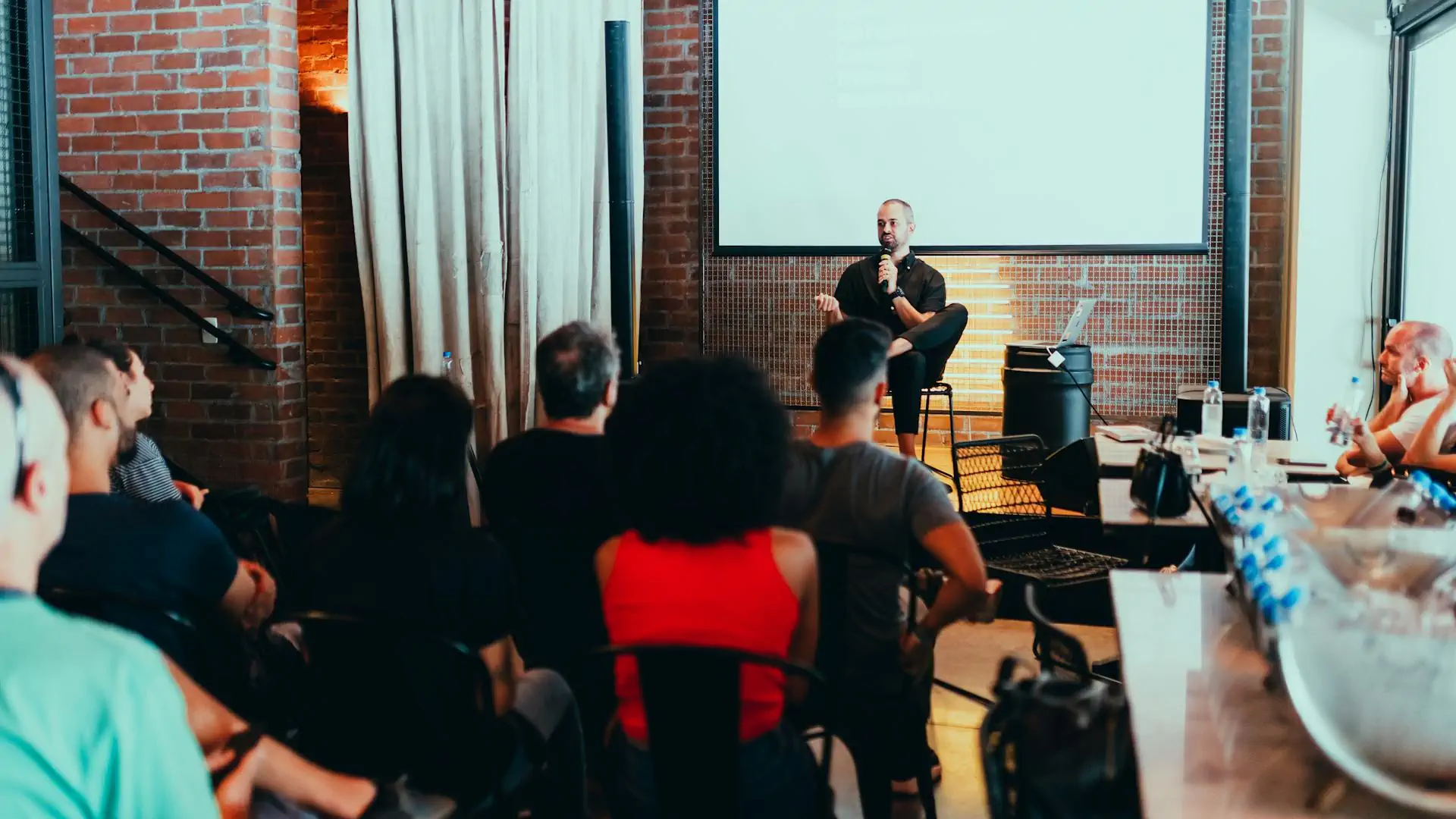Do you know that moment? A key employee resigns, and you realize that years of experience, specific procedures, and informal knowledge that are not documented anywhere are leaving with him or her. Training the successor takes months, and during that time, you encounter problems that no one knew your departing colleague was dealing with.
Photo by Matheus Bertelli
This is not an isolated situation. With the retirement of the Baby Boomer generation, this problem is growing. And the more specialized your company is, the more painful the loss of know-how can be.
The good news is that today we have tools to systematically capture, structure, and pass on this know-how—faster and more efficiently than ever before. A combination of a well-thought-out process and AI technologies can transform the knowledge “in people’s heads” into a competitive advantage for the company.
What Happens When You Don’t Actively Manage Your Know-How?
When companies don’t invest in capturing and transferring knowledge, they often face these challenges:
- Prolonged onboarding: New employees are lost because they don’t know who to turn to or where to find information
- Repeating the same mistakes: You solve problems that someone else has already solved in the past, but the solution has been lost
- Critical dependency: When a key person gets sick or is on vacation, some processes come to a halt
- Fragmented knowledge: Everyone does things a little differently because there are no standardized procedures
- Loss of continuity: With every departure, you start partially from scratch
Solution: 10 Steps to Systematically Working with Internal Know-How
We will show you a proven approach that combines a human touch with the possibilities of AI. The entire process can be implemented in a matter of weeks to months, depending on the size of your team.
STEP 1: Mapping Internal Know-How
What people do:
You organize workshops with teams and individual interviews with managers. You ask basic questions: “Who in the team holds critical knowledge? What would happen if that person left tomorrow? Which processes are the least documented?” Only people can capture the context, relationships, and informal knowledge hierarchies that actually work in the organization.
What AI does:
It automatically transcribes recordings from workshops (using tools such as Otter.ai or built-in MS Teams features), extracts key terms, and can create a visual knowledge map. In a short time, you have a structured overview of where critical know-how is located and who owns it.
Practical tip:
Prepare a set of focused questions:
- What knowledge is critical for us?
- Who specifically has it?
- Is this knowledge documented anywhere?
- What would it cost us to lose it?
- Who can realistically pass it on?
Record the discussion and use AI to create the first version of the knowledge map.
Output: A map of critical know-how with identified risks and priorities
STEP 2: Identify Key Experts
What people do:
Managers nominate experts based on practical experience. HR can conduct a short survey among colleagues: “Who do you turn to most often when you need help with a specific area?” This peer nomination often reveals true experts who are not necessarily in management positions.
What AI does:
It can analyze project documentation, internal communications (Slack, Teams, emails), and identify “hidden experts”—employees who are frequently consulted by others, even though they are not formally designated as experts. This analysis can reveal talents that you might otherwise overlook.
Practical tip:
Compare the results of human research and AI analysis. You will often discover valuable people who are not visible – for example, a team member who has already solved hundreds of technical problems, or a coordinator who actually holds the entire process together without it being part of their job description.
Output: A list of experts with a profile of their areas of expertise and availability.
STEP 3: Selection and Nomination of Internal Lecturers
What people do:
You personally approach the nominated experts. You explain the benefits for them (recognition, development of presentation skills, personal brand building) and for the company. You secure management support and clarify expectations. It is crucial that the lecturer accepts the role voluntarily and feels comfortable in it.
What AI does:
The recommendation system can analyze a combination of factors: expertise + communication skills (e.g., from evaluations of past presentations or training) + capacity availability. It will help you identify the candidates with the best qualifications.
Practical tip:
Technology is only a tool for pre-selection. A face-to-face meeting with the candidate is key. Motivation, personal approach, and a desire to share knowledge are much more decisive for success than technical skills alone. Show the expert that you value their knowledge and that they have your full support.
Output: A group of committed internal lecturers ready to share their know-how.
STEP 4: Extracting Know-How and Processing
What people do:
You conduct structured interviews with experts. You ask about processes, common mistakes, best practices, tacit knowledge (“What do you do automatically without thinking about it?”). An external facilitator or HR partner often sees connections that the expert takes for granted and does not mention.
What AI does:
It transcribes the interview, identifies key information, and creates an initial structure: a training outline, checklists, method cards, a list of frequently asked questions. Tools such as ChatGPT or Claude can create a clear outline from an hour-long interview in minutes.
Practical tip:
Record the interview in a quiet environment with a high-quality microphone. Give the AI specific instructions: “Create an outline for a half-day training session, identify the 5 most important procedures, and generate a list of common mistakes” from this interview. You will immediately receive a first draft, which an expert can then supplement and review.
Output: Structured outline of educational content + supporting materials
STEP 5: Preparing and Training Internal Trainers
What people do:
HR or an experienced trainer provides mentoring: how to structure a presentation, how to engage participants, how to deal with difficult questions, how to work with group dynamics. Practicing in front of a small group of trusted colleagues will help overcome nervousness and gain confidence.
What AI does:
A virtual coach in the form of an AI avatar (such as tools like Yoodli or Poised) can simulate an audience, evaluate speech tempo, identify overuse of filler words, or monitor how much you look at the camera. It provides immediate feedback without the stress of a human audience.
Practical tip:
Have the trainer rehearse key parts of the presentation in front of the AI avatar several times. They will receive specific feedback that they can apply immediately. Then rehearse the entire presentation in front of live colleagues who will provide content feedback and support.
Output: A prepared and confident trainer capable of leading their first training session.
STEP 6: Designing the Learning Architecture and Curriculum
What people do:
Define strategic priorities: What is critical for the company in the long term? What are the career paths within the company? How does the knowledge of different experts build on each other? Decide on the appropriate formats: workshops, e-learning, mentoring, job shadowing.
What AI does:
It can analyze existing educational content, identify gaps in team competencies, and propose a logical course structure. For example: “Employees in this role first need to master the basics of A and B, then they can move on to more advanced topics C.”
Practical tip:
Enter your company goals and the required competencies for key positions into the AI. Let it generate several variants of the training architecture (basic path, advanced, expert). Select the structure that best suits your reality and adjust it as needed.
Output: Training architecture connecting different topics and levels
STEP 7: Creating Study Materials
What people do:
An expert reviews all content for accuracy, timeliness, and relevance. They add real-world examples from company practice, case studies, and stories that bring the material to life and make it authentic. They ensure that the terminology matches the company’s language.
What AI does:
It can quickly generate presentation texts, infographic designs, test questions, and case study outlines. It can translate content into different languages for international teams. From the outline, it can create detailed study materials, which the expert then reviews and supplements.
Practical tip:
Create a very detailed outline with key points that the material MUST contain. Enter into the AI: “Create a study text, use practical examples, end each chapter with an exercise to test comprehension.” You will have the first draft in a fraction of the time you would spend writing from scratch.
Output: A complete set of study materials (presentations, worksheets, tests, case studies)
STEP 8: Digitizing Content and Preparing E-learning
What people do:
You design the user experience: what the course should look like, what interactions to use, how to ensure it fits with the corporate culture (formal vs. informal tone, use of gamification?). You test with a small group and get feedback.
What AI does:
Specialized tools (such as Synthesia for AI videos or Articulate 360 with AI features) can convert documents into interactive e-learning. They create adaptive quizzes where the difficulty adapts to the participant’s success, personalized learning paths, or automatic captions and transcripts to make content accessible.
Practical tip:
Try a modern tool that can turn a PowerPoint presentation into an interactive course in minutes. Add several interactive elements (quizzes, simulations, short videos) to each module to increase participant engagement.
Output: An e-learning course ready to be deployed in your LMS system.
STEP 9: Pilot Testing of the Training Program
What people do:
You facilitate a pilot run with a small group of participants from the target group. You actively collect feedback during and after the course: What worked? What was unclear? What is the optimal length and pace? Instructors gain valuable experience in a safe environment.
What AI does:
It evaluates data from the LMS: completion rates for individual modules, time spent in different parts of the course, test success rates, places where participants “drop out” or go back. It creates visualizations and helps identify problematic parts of the content.
Practical tip:
After each module or section, give participants quick micro-feedback (3 questions, 2 minutes). Visualize the data using AI and share it back with the pilot group: “Most of you appreciate the practical exercises, but this chapter was rated as too abstract.” This makes participants feel part of the improvement process.
Output: A validated program with a specific list of recommended adjustments.
STEP 10: Pilot Evaluation, Fine-Tuning, and Full Deployment
What people do:
Together, you analyze all results and feedback, decide on final adjustments to content and process. You prepare a communication campaign for the official launch of the program across the company. You ensure continuous support for instructors (supervision, practice community, experience sharing).
What AI does:
It prepares automatic reports summarizing key metrics: completion rate, average ratings, most appreciated parts, suggestions for improvement. It can suggest specific optimizations based on data: for example, where to shorten content or where to add more exercises.
Practical tip:
Use AI to create a launch checklist and timeline for full deployment in your organization. Create a simple dashboard with key metrics (number of participants, satisfaction ratings, practical application) and monitor them regularly.
Output: A fully deployed training program with impact measurement settings
What Are the Benefits of This Approach?
Companies that systematically capture and share internal know-how typically see a number of positive effects:
✅ Shorter onboarding – new employees get up to speed faster because they have access to structured knowledge
✅ Time savings – knowledge does not need to be sought from different people, it is available in one place
✅ Reduced dependency – critical processes are not dependent on just one person
✅ Greater engagement – employees see that the company is investing in their development and values their knowledge
✅ Strengthened employer branding – a systematic approach to development attracts talent
✅ Continuity during changes – when people leave or changes occur in the team, there is no need to start from scratch
The exact impact depends on the specific situation of your company, its size, and industry. The key is to start working systematically with knowledge as an asset.
People + AI = The Future of Corporate Training
The power of this approach does not lie in replacing people with technology. It lies in intelligent combination.
People bring context, empathy, storytelling ability, and authenticity. They understand the nuances of corporate culture and can pass on tacit knowledge that cannot be easily described in words.
AI speeds up information processing, helps reveal hidden patterns, enables rapid content creation at scale, and personalizes the learning experience for different learning styles.
Together, they create a system that:
- Preserves critical know-how from irretrievable loss
- Democratizes access to knowledge across the entire company
- Reduces the time it takes for a new hire to become productive
- Builds a culture of continuous learning and sharing
- Makes knowledge visible, transferable, and usable
How to Get Started?
There is no need to implement all 10 steps at once. Start with a small pilot project:
Week 1: Identify 1-2 critical areas where the loss of know-how would hurt the most.
Week 2: Arrange a structured interview with a key expert.
Week 3: Record the interview and use AI to create the first content outline.
You don’t need a perfect plan. You need to get started and learn as you go.
Every step you take toward capturing your internal know-how is an investment in your company’s future. The sooner you start, the less valuable knowledge you will lose and the stronger your organization will become.
Do You Need Support?
The process of capturing and sharing know-how requires both methodological know-how and facilitation skills. If you are looking for a partner to help you, we are here for you.
Grow Your Business by Sharing Know-How
People learn best from each other. We will help you create an internal training program that connects experiences, promotes cooperation, and brings growth—both to individuals and the entire company.
I have been working with MenSeek for over 10 years. During that time, I have had the opportunity to participate in many diverse projects for various clients: from building websites to online campaigns and creating magazines to complete employer branding. In our team, I mainly take care of texts. My dream is to travel the world and I always try to fulfill my dreams. I also enjoy sports and tourism, I like reading and, as a true Czech, I like beer.



